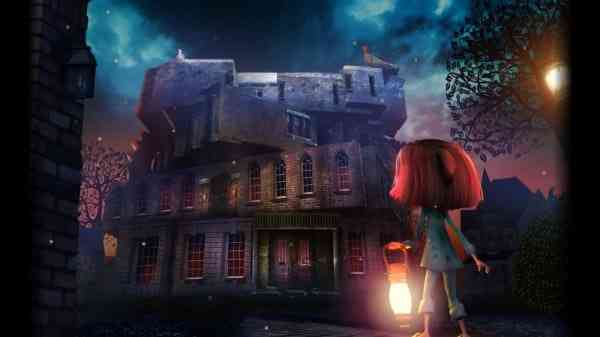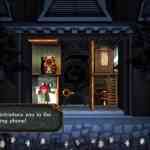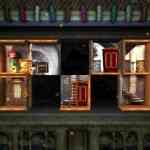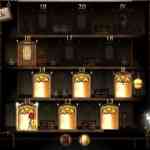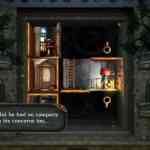If you ever had one of those sliding puzzles where you have to rearrange the squares without being able to pick any of them up in order to reassemble a picture you’ve already got 90% of Rooms under control. The rest basically boils down to “you’re inside the puzzle.”
In Rooms: The Unsolvable Puzzle you take on the role of a young girl who finds herself in a strange house. She makes her way through this house so that she… I guess because she can. The story of the game is told through a few interspersed cutscenes that don’t make a whole lot of sense, but there’s a toymaker and a magic puzzle piece. And, well, there are puzzles to complete. To be fair it’s not uncommon for puzzle games to lack any sort of real story so at least they’re giving you context to work with here.
The puzzles in Rooms consist of sliding tiles around to get to the exit. Your character can walk between tiles (assuming the path is clear) and you can only move the tile you’re inside. Various additional wrinkles get added onto this basic structure the further you get. For example, there are keys you need to unlock certain barriers, there are telephones that teleport you between rooms, and there are closets that swap the content of two room tiles. Why telephones and closets? Why not I suppose.
The house theme is nice looking, but as may be apparent from the strange uses for everyday objects, it’s pretty irrelevant. There’s also a strange talking lantern sidekick who says awkward things like “Yes! Show me how smart you are!” The story and theme are ultimately just window dressing on a puzzle game with somewhat unique mechanics. So how is the puzzle game so far?
The number of moves you take to complete a stage determines the ranking you receive: either one, two, or three gear pieces. “Moves” in this case only include actual room tile movements. Your character can walk around, teleport through telephones, swap rooms with closets, and so on as much as she desires without increasing the move count. All of this is to say that despite whatever complexity is added on top of the basic sliding tile puzzle framework, the difficulty is basically still determined by figuring out how to get whatever tile you need into whatever location you need it to be in. Figuring out which tile that is, or perhaps which set of tiles, is part of the challenge, but it’s basically just a matter of sliding tiles in the right order, handicapped by the ability to only slide tiles your character is currently inside. This makes the game occasionally difficult, but not exactly complex. With this only being the first house that you need to navigate through I’m fairly certain that further houses and puzzles will add new tricks and challenges to the equation.
Calling your game “unsolvable” is a strange bit of hyperbole, particularly when the game itself seems to be aiming for a pretty casual crowd. There are some challenge levels in the “basement” of the first house, but in general the game hasn’t been too taxing. The more likely explanation is that the subtitle and the intentionally vague story cutscenes are intended to add some mysteriousness to an otherwise straightforward tile-sliding puzzler. Still, there’s more to see once the final game is released on May 1st so there may yet be some challenge added to back up that ‘unsolvable’ moniker. Check back with COG for the final review then.

